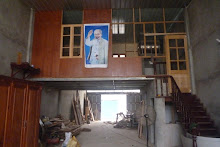1. Construction permits
2. Construction design drawings
3. Find construction workers
4. Building house
5. Excavation
6. Determine the size foundation
7. Improving ground
8. Construction concrete foundation
9. Concrete column construction
Construction trenchResistant bracing
Building walls, walls
Installation of formwork beams, floor
Reinforced beams, floor
Concrete beams, floor
Floor, 2, 3,4,5 ..
Complete top-down




